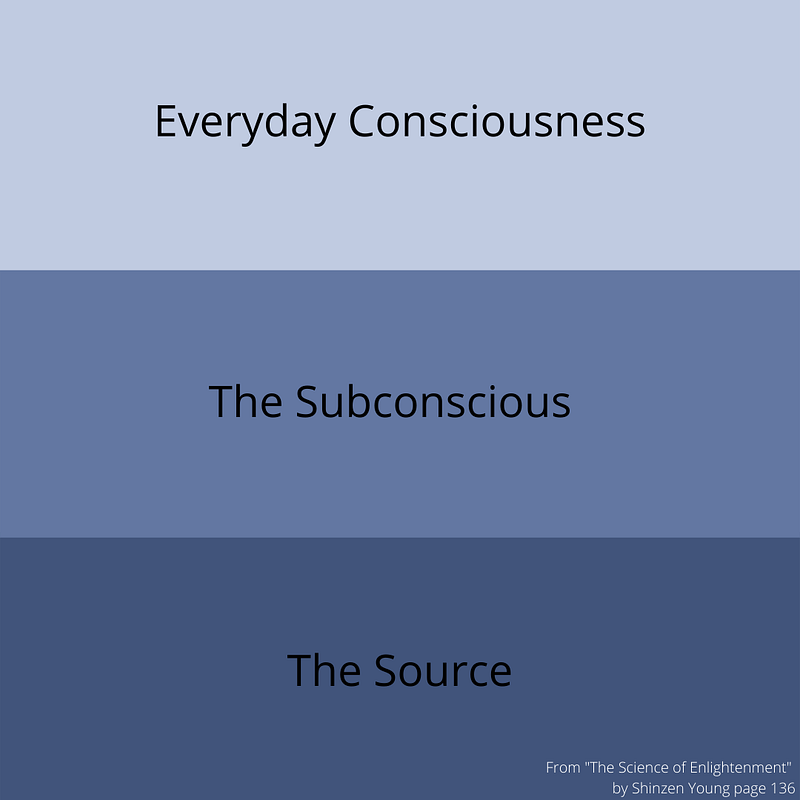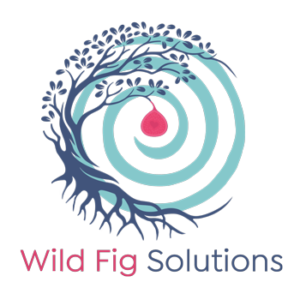The moment you’re stuck in a paradigm it feels bad. Including if it’s a spiritual paradigm. So use this post as a chance to understand the overall journey and see where you are.
Spiritual journeys! Oo what a minefield!
What do you mean by spiritual? What do I mean by spiritual? Is there a journey? How could we there be when past and future are simply creations of the mind in the now? And who is the ‘you’ that thinks it’s on a journey?
So yes, a minefield, and yet, here I am writing about your spiritual journey!
Because sometimes it seems useful to use concepts as pointers to what’s happening and what’s available. I definitely found it useful having recently read Shinzen Young’s The Science of Enlightenment, to learn some fresh conceptualisations that point towards what’s commonly experienced.
Direct Path and Progressive Path
This was one of the first distinctions I discovered in the spiritual exploration world.
The first term — the direct path — refers to an exploration that goes straight to the heart of things — who am I really? It looks directly at this question and therefore directly at what we are not, what is not essential to us.
The second — the progressive path — is the path of meditation, focusing the mind on a mantra, the breath or another object. To ‘train’ it to settle, to train us to settle. With the promise that if you meditate enough you will wake up.
I have no data on this but I know that Fred Davis holds the direct path in much higher esteem if you want to wake up.
That’s why Mooji said:
“Many spiritual practices are pleasant. They don’t challenge your identity and it’s delusion, therefore they are attractive to your mind. There’s nothing threatening when someone tells you, ‘we’re chanting because it purifies the energy and brings you closer to God.’ It feels nice for people — adventurous and agreeable. But I’m not interested in adventure. I’m here only for liberation! Not entertainment for your mind, but the smelling salts that will stun you into awakening.” Mooji
Which brings me onto a second distinction in the spiritual exploration world…
Straight to Source or Salving the Subconscious

In his book, Shinzen uses this image to show the journey from our everyday world to Source, and talks of it not being so much about traversing the Subconscious, but rather the dissolution of it. Those of you who know my river metaphor will see that we’re both saying the same thing here, just with the Source and Everyday represented at opposite ends (there is no single way to conceptualise the unconceptualisable!). Shinzen points to the fact that, until Everyday and Source are in direct contact, we will continue to suffer in our singular perspective on life.
And so this is the ‘experience’ that gets called enlightenment. Nothing in between Source and Everyday. Source simply expressing directly through this body and mind. Nothing sending it off-course.
How do I get there?
First of all, you’ve already been there. You have had times in your life when the subconscious was not present and you were in that pure expression of life. Often it goes unnoticed because the mind wasn’t there to comment on it! Although it does sometimes pop up afterwards with a story about it.
But, I know, what you really want is a more lasting experience of that — of course! It feels lovely! And so let’s look at the Subconscious layer and methods of dissolution.
Shinzen talks of how Freud — with the subconscious as the dark cellar of repressed pasts and unresolved traumas — and Jung — with the subconscious as the world of archetypes, angels, ancestors and entities — both align with Buddhist understandings of clearing up the mind. And maybe — just maybe — it is both of these that are involved in the dissolution of this middle realm.
We may, or may not, get both on our own journey — and it’s not wrong if you do or you don’t — but I think it’s helpful to be open to the possibility of all…if you want to move past a singular perspective.
My journey
Over the past two years I’ve been introduced to, and become increasingly aware of, the spiritual practices that involve calling in angels, meditating on something, healing past lives, bringing subconscious traumas to the surface, talking to higher selves, seeing entities, etc. All the classic ‘woo woo’ ideas of what spirituality is normally taken to mean. And all of which relate to the Subconscious realm — including both the Freud and the Jung versions of it.
All of these spiritual approaches are things which my ‘corporate self’ would have immediately scoffed at and dismissed.
Then my ‘Direct Path self’ would have continued to dismiss because well, why would you bother with all that? The mind was plastering it with a label of ‘fixing our psychology’ which isn’t needed when you know you are as The Source. And because, when you know that life is always there for you, to wake you up when you fall back into the confusion of being a separate self, why would you ‘work at’ anything like sorting out your thinking?
So, anyway, despite the mind’s scoffings and dismissals, three years ago I came across the work of Clare Dimond who became my coach for a couple of years — boy is she a master at weedling out the subconscious attachments to be seen, loved and dissolved! And also someone who stands on the solid ground of having walked the Direct Path first.
Over this time I also attended sound therapy with a therapist who used tarot cards and saw past lives and persecutions in my ancestry, I did chakra work and colour therapy. Plus I was in a group where we would meditate together, and which would sometimes bring to mind what appeared to be other past life experiences to be seen. Who knew!!
Then this year I’ve moved on to work with people who do energy transmissions and activations— like water getting to the bottom of the subconscious basement to clean it out — these approaches seem to reach where no words could.
During this time, I’ve come to see for myself what Rupert Spira espouses — i.e. that the Direct Path is incredible for awakening to who we really are. And that the Progressive Path comes into play brilliantly to clear up the remaining confusions of the subconscious.
And it seems to me that the clearing up becomes so much easier and more effective when taking place on the solid ground of knowing ‘who I am’ via the Direct Path. Indeed, if we never know ourselves as Source, we can have a lovely time Salving the Subconscious but still be entirely asleep, believing we’re a separate body-mind, in a big scary world.
Therefore both Straight to Source and Salving the Subconscious — both Progressive and Direct Paths — have been essential components of the journey for me, and I’d suggest are needed for all that are interested in the journey of awakening and enlightenment.
And — it’s evident we can get stuck.
Am I Stuck?
So back to the original question of this post. Where are you on your spiritual journey?
If you’ve followed a Direct Path route— do you find yourself dismissing out of hand anything psychological? Do you use phrases like ‘but it’s all just an illusion’ or ‘it doesn’t exist so you don’t need to think about it’ or ‘only a separate self would be concerned with changing that’, or ‘ that’s just thought’.
If you’ve followed a Progressive Path route — does it look like you need to have certain practices or habits in place in order to be OK? Do you get frustrated when you can’t do your practices in the way, or at the time, you want? If things go wrong in life do you quickly feel the need to reach for a muscle test, a tune-in, a meditation or a tarot card for an answer, or to soothe yourself / a past life / an ancestor?
None of these words or activities are wrong in and of themselves (because nothing is!) but if you find yourself in a contracted state, or if you find yourself buffeting against, or being rebuffed by, the world — this is the sign that you are stuck, and that you’ve simply switched out the singular perspective of ‘Everyday Consciousness’ for a different, singular perspective — a ‘Spiritual’ one.
What now?
- Check for yourself with your own experience. That’s always your guidance system. Does your experience of life feel loving, easeful and obvious (even if the words you say are seemingly strong) or does it feel contracted, conflict-y or defensive (even if the words you’re saying are seemingly soft).
- Be honest. Be really, lovingly honest about where you’re in conflict with something or someone. Be really, lovingly honest about where it looks like your way is the right way and that it has to be that way. Be really, lovingly honest about where you’re clinging to a singular perspective.
- Get in touch if you want to test out with me where the next stage of your journey might lie. As you can see I’ve traversed most of it so I can point you in a multitude of directions for your next step.
And know that always, whatever you do, or choose, it is perfect for you.
With love, Helen
The next Brilliance Book Group starts on 13th January. If you might want to join us — and therefore want to influence the book we read — vote here.
I coach and guide smart, passionate, curious people who care about improving the lives of those around them. Often coaches and leaders, they’ve worked hard all their lives to be the ‘best’ them and it doesn’t seem to have delivered the happiness, security or freedom they expected. Now they’re wondering what else is available. I guide you back, prior to stories, to remember the real you because that’s what you, me and the whole world really wants! Find out more here.

